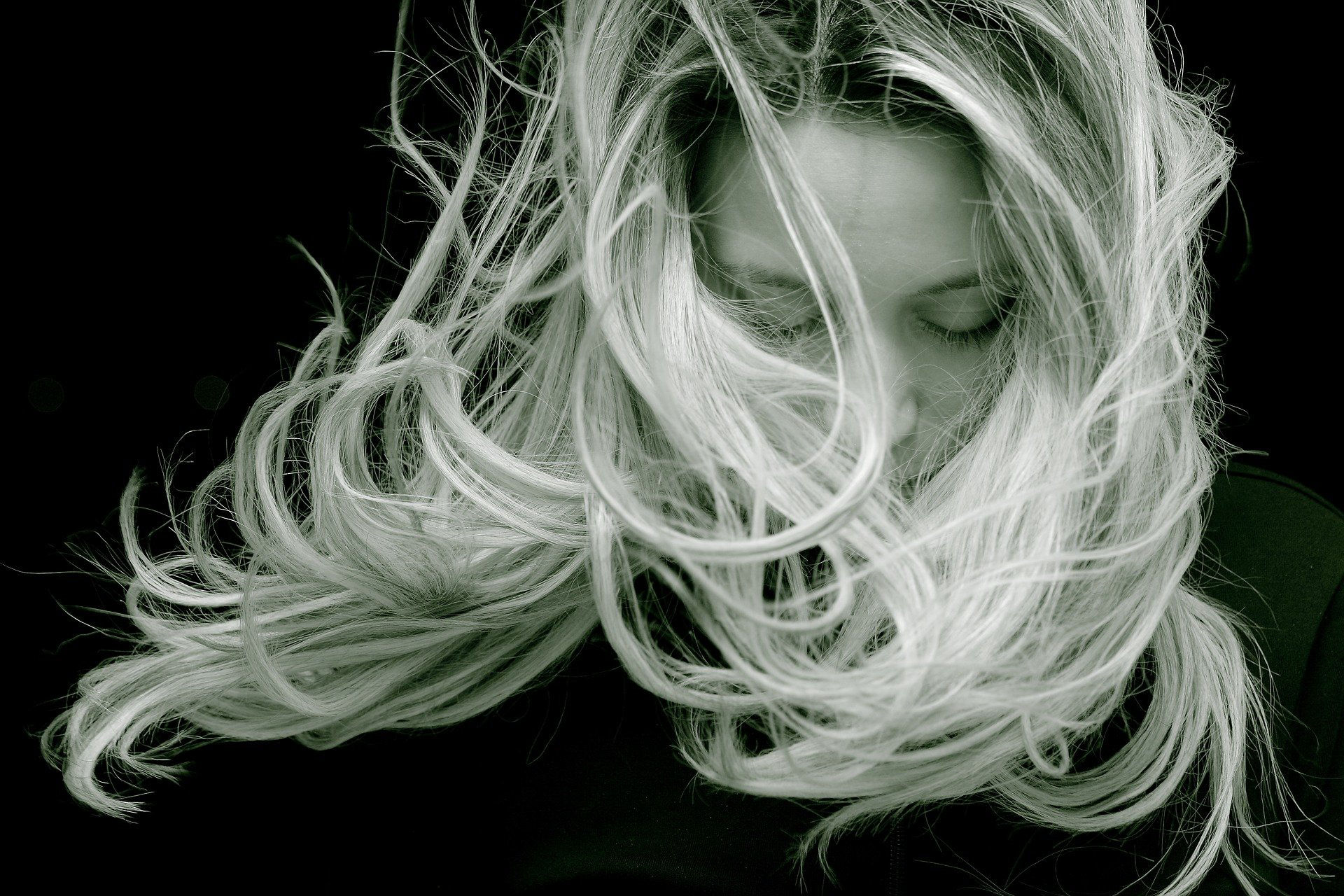
Damaged Hair: Foods to reinforce your hair
Needless to hide, we are all madly in love with our hair, spend hours and hours to brush them, curl them, smooth them and impel them. But who knows why, they are never like we want them?

Needless to hide, we are all madly in love with our hair, spend hours and hours to brush them, curl them, smooth them and impel them. But who knows why, they are never like we want them?

The Look: Frizzy, easily tangled, lacking shine, and altogether unmanageable
The Cause: Damaged cuticles. Cuticles comprise the outer surface of the hair shaft. Your cuticle cells overlap like scales and are held together by a lipid layer that helps make the surface of the hair naturally water-resistant. When cuticle scales are closed and smooth, the hair is in its best state of defense. The strand reflects light and hair looks shiny and healthy. When cuticle scales are open and lifted, hair looks dull and frizzy, feels brittle and rough, and tangles easily.
The Culprit: Heat, UV rays, friction, high pH products
The Look: Split ends, easily breaks
The Cause: Cuticle AND cortex damage. The cortex of the hair is made of keratin proteins and structural lipids. Cells within the cortex are able to stretch and recoil and are responsible for hairs elasticity and strength. The distribution of cortical cells is responsible for our hair’s pattern – straight, wavy, or curly. The cortex is also where hair’s color, or melanin, is stored. Cortex damage weakens hair strands and makes them more vulnerable to breaking and splitting. An exposed cortex is also prone to water damage during wetting and washing hair as it easily becomes water-logged, swelling and further weakening the strand.
The Culprit: Hair color, chemical straighteners or perms, heat curling, flat ironing
The Look: Patchy or slow hair growth, excessive hair falling out.
The Cause: Damaged your hair follicles. The hair follicle is the living part of hair. It attaches to the scalp and is responsible for helping our hair grow.
The Culprit: Product build up, excessive brushing and combing, extensions, chemical treatments

To always look strong and shining they need the right nourishment and mother nature has thought for us a series of foods to strengthen our hair.
Primarily, it is necessary to have a proper supply of vitamins and mineral salts. Whole grains (such as rice) and beer yeast are rich in vitamin B7, suitable for preventing hair loss and effective for keratin production.
Legumes, in addition to being rich in vitamins (especially Group B), contain iron and proteins, which help to strengthen hair, help them grow and prevent dry skin.
Parsley, carrots and spinach, like all dark green leafy vegetables, besides being healthy nutritional for the body, are all major sources of vitamins A and C. These vitamins help produce sebum, the natural oil of the scalp that acts like a natural hair balm.
If you are looking for a food that gives the texture to your hair, treat tasty mangoes, strawberries, pineapples, peaches and kiwis: all rich in vitamin C, essential for increasing collagen.
And do not forget to go home with a dried fruit bag for an easy and fast snack. Almonds, nuts and cashew nuts contain zinc, which minimizes hair loss. Nuts, among other things, also contain a high level of omega-3, which improves the brightness and texture of the hair.

There’s actually a lot to the old saying “you are what you eat,” especially when it comes to hair and skin health. Certain nutrients help your hair grow and stave off breakage from damage. Make sure you’re getting enough zinc, iron, and folic acid in your daily diet. Adequate protein and antioxidants (found in plant foods) can also keep your hair damage-free.
There’s a multitude of evidence showing links between stress and hair loss, but it’s also known that stress can lead to hair breakage. Telogen effluvium is the type of stress most likely linked to hair damage. This type of stress makes your follicles go dormant, so hair that’s in the middle of a growth cycle may break off. You might notice old hair fall out, too. Managing your stress may result in healthier hair.
Unusually dry hair is one of the precursors to damage and breakage. It’s also caused by a variety of factors, including dry weather, low humidity, and too much heat. Be sure you use warm and not hot water when you wash your hair — the latter leads to further drying.
If your ends are dry, consider concentrating shampoo on your scalp only. Skipping conditioner is also a no-no. If you’re pressed for time, spritz on a leave-in conditioner before combing wet hair. (As a bonus, this Organic Liquid Crystal from L'Erboristica also offers effective restorative treatment.) Check out these additional tricks for eliminating dryness.
To get the best results from your hair dryer, flat iron, or curling iron, you need high heat. However, when you use these tools incorrectly or too much, you risk damaging the cuticle from extreme temperatures.
One way to prevent overall heat damage is to give your strands a break from all styling tools at least once a week. To reduce the actual heat damage from your styling tools, select ceramic versions — these heat up more evenly so you don’t have to keep using them on the same sections of hair repeatedly. It’s also important to protect your hair before you apply the heat. Check out this heat-protecting spray to minimize damage.
Perms, relaxers, professional straightening, and coloring can all make your hair seem like it’s healthier after the first session or two. But if you do these services too often, the cuticle can break down and cause hair damage.
The American Academy of Dermatology (AAD) recommends extending the time between your sessions to 8–10 weeks, if possible. In the meantime, try a hair mask to extend your results, such as this heat-protecting mask.
If you have oily skin, you’re also more likely to have excess sebum (natural oil) production in your scalp. This can lead to the temptation to wash your hair more often than you need to.
While daily washes are fine if you have oily hair, you shouldn’t wash your hair multiple times per day. On the flip side, extremely dry hair may only need weekly shampooing, according to the Nemours Foundation. Also, be sure you shampoo gently at the scalp and apply conditioner smoothly from your ends to your roots. If you need extra oil reduction during the day, try out L'Erboristica Perfect Hair Deep Repair Shampoo.

When you step out of the shower, it’s a natural response to rub a towel on your skin and hair. However, this rubbing motion actually damages your hair when it’s most vulnerable (after being wet). Instead of rubbing water out of your hair, blot an absorbent towel around your hair instead. You can also leave a towel in your hair as a temporary measure to absorb excess water.
Elastic hair ties are must-haves for keeping your hair out of your face while working out. And, let’s face it, they can come in handy on bad hair days or when you’re in a hurry.
The problem with hair ties is they pull on your scalp and hair cuticle. You may even notice some hair falls out every time you undo your ponytail. You can fix this by wearing your hair down once in a while, or by making your up-do a bit looser so it doesn’t pull on your hair so much. Also make sure you’re wearing real hair ties, and not just rubber bands that can damage your hair.
You may have heard that brushing your hair 100 strokes a day is good for your hair, but the AAD says that’s simply a myth. They recommend that you instead only brush and comb when styling your hair. Make sure you used wide-tooth combs to prevent breakage. You should also only use a brush for when your hair is dry, and avoid using plastic bristles. Try a brush with natural bristles instead.
It may seem like cutting your hair can damage it. Ironically though, hair trims help keep your hair healthy and free of split ends. You can think of a hair trim like you would exfoliation for skin — in both instances, you need to remove some of the old cells to help new ones grow. When you have split ends, these splits in the cuticle can travel up the rest of the length of your hair and lead to breakage.
See your stylist at least every eight weeks. Even if you’re growing out your hair, trimming damaged ends can prevent further breakage.
Hypothyroidism (low thyroid disorder) occurs when your thyroid gland doesn’t produce enough thyroid hormones. Although the thyroid itself is small in size, it plays a large role in keeping your body functioning. This includes your metabolism, heart rate, and even your hair growth.
People with low thyroid might notice excessive hair damage and loss, especially in the shower or after brushing. If you have dry, damaged hair combined with low energy, sudden weight gain, and depression, see your healthcare provider for a thyroid check. Learn more about the effects of hypothyroidism on the body.
If you or a loved one has an unhealthy relationship with food, hair damage is a possible symptom. This is especially true of eating disorders that cause malnourished, such as anorexia and bulimia nervosa. In such cases, hair follicles don’t have the nutrients they need to produce new hair and the process is terminated altogether. You may even notice new hairs that break off in the middle of the growing cycle.
Eating disorders can lead to even more serious consequences and require medical treatment. Reading personal stories of those who have overcome eating disorders may help inspire you or your loved one to seek treatment.
Wrinkle: What they are & How to reduce them?
Your beauty should not come from outward adornment, such as braided hair and the wearing of gold jewelry and fine clothes. Instead, it should be that of your inner self, the unfading beauty of a gentle and quiet spirit, which is of great worth in God's sight.
1 Pet 3:3-4


Sign up for our Newsletter!
FACEBOOK COMMENTS WILL BE SHOWN ONLY WHEN YOUR SITE IS ONLINE